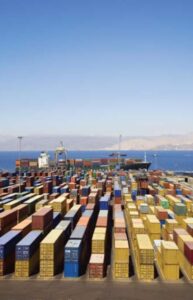Special economic zones give industry a vehicle to achieve tax breaks and benefits unavailable elsewhere
Rohan Shah and Nishant Shah explain
Special economic zones (SEZs) could provide a welcome boost to investment in specific sectors. Some 100 SEZs already in the pipeline could attract US$13.1 billion in investment and employ 1.5 million people. As such, SEZs have been hailed as engines of economic growth.
But they have not been without controversy.

One of the core issues is the acquisition of land for SEZs, which has led to protests and court proceedings over fears that special economic zones could displace farmers and lead to losses of agricultural land.
To allay these fears and protect fertile farm land, the Ministry of Commerce issued internal guidelines that only allow acquisitions of barren or single-crop land. Double crop-land can only be used for up to 10% of the total area.
Despite this policy, shocking events at Singur and Nandigram in West Bengal and other places in which state governments acquired land with little heed for either farmers or food production, prompted the Central government to freeze all new SEZ proposals until a definite policy on resettlement and rehabilitation is finalized.
Economic strength
Controversy notwithstanding, SEZs provide industry with a number of incentives.
These zones are duty free enclaves deemed to be foreign territory for the purposes of trade, duties and tariffs. Within a SEZ, economic activities are promoted by policy measures not generally applicable to the rest of the country.
SEZs were first introduced in India on April 1 2000 under the Foreign Trade Policy. A separate SEZ Act, 2005 and SEZ Rules, 2006 were then enacted.
The legal regime governing SEZs in India provides for an independent administration.
A Board of Approval (BoA) under the Ministry of Commerce is the authority responsible for the development of SEZs. However, any proposals to set up new zones must be recommended by the State Government where the SEZ is proposed.
Every SEZ is administered by a development commissioner appointed by the Central Government.
Various options
Legislation provides for three different types of SEZ. The first are “multi-product SEZs” which allow for the manufacture of multiple types of goods in multiple sectors and have a minimum area required of 1,000 hectares. The exception is “multi-services SEZs” where the minimum area is 100 hectares.
“Sector-specific SEZs” are set up exclusively for one or more products or services in a single sector and have a minimum area of 100 hectares.
“Other SEZs” include zones set up in ports or airports for trade and warehousing and their size requirements range from 10 hectares for electronic products and information technology to 100 hectares for zones set up in ports or airports.
In addition, the area within any SEZ has to be divided into processing and non-processing sections. A minimum of 35% of the total area must be devoted to processing in multi-product SEZs and 50% in all others. But the law is likely to change soon, to set up a uniform 50% minimum for all types of zones.
Developing gains
Special economic zones are developed, operated and maintained by a developer responsible for procuring the land and arranging for the construction, development, infrastructure, operation and maintenance of the SEZ.
To qualify for developing a multi-product SEZ, the net worth of the applicant has to be at least US$60 million and the minimum investment required is US$250 million. For sector-specific zones, the applicant’s net worth has to be a minimum of US$12.3 million and the minimum investment is set at US$60 million.
Units are set up within the SEZ by entrepreneurs to undertake manufacturing activities or provide services.
SEZ units are required to be positive net foreign exchange earners.
Tax benefits
One of the primary incentives offered to developers and businesses that set up within special economic zones are tax benefits.
Businesses operating within an SEZ receive 100% tax relief on profits and gains derived from exports of goods and services for five years, and 50% for five years after that.
A further 50% is allowed during a third five-year period if the profits and gains are credited to a Special Reserve Account. Units are also exempt from capital gains taxes on transfers of assets if a company moves from an urban area to a SEZ.
Developers and co-developers of SEZs also get a number of significant tax breaks.
They get 100% deductions from taxes on profits and gains for 10 years, exemptions from “special provisions” under the Minimum Alternate Tax and important breaks on dividend distribution taxes.
Among the indirect tax benefits for special economic zones and their unit-holders are exemptions from customs duty, excise duties and service taxes.
The debate surrounding special economic zones is not likely to die down any time soon.
The challenge for the government is to balance the needs of farmers and food producers with those of industry and the economic growth of the country.
Rohan Shah and Nishant Shah are lawyers at Mumbai law firm Economic Laws Practice.


























